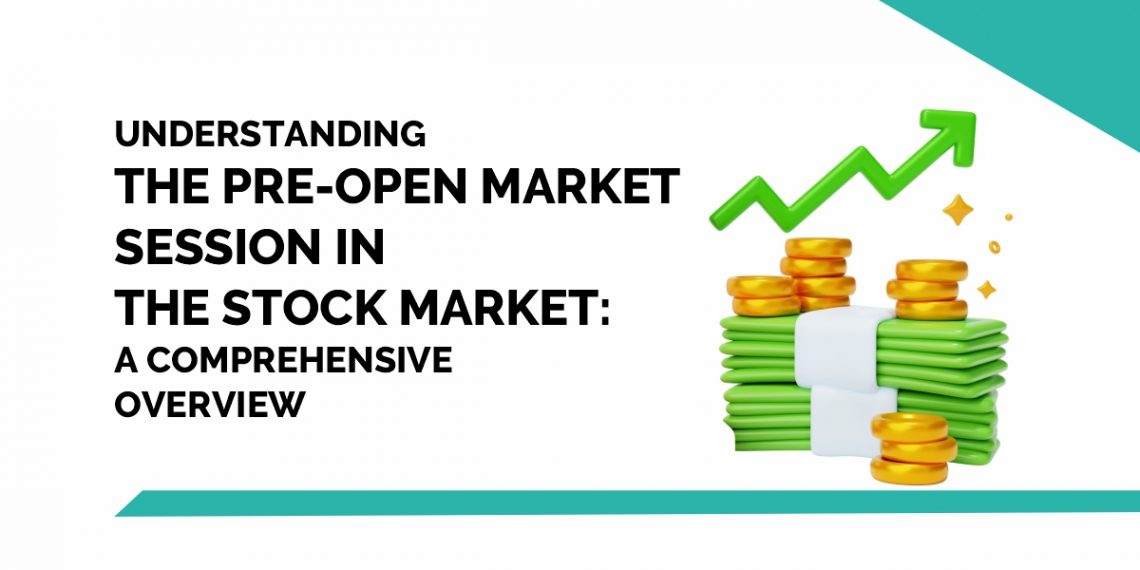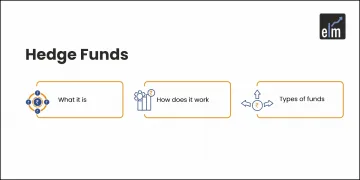For savvy traders and investors, the pre-market session—also called the pre-open market—is a critical time. It provides a useful introduction to regular trading hours, enabling strategic positioning and providing a glimpse into possible market direction.
Investors may place orders to purchase or sell assets during this session, but trades are not yet matched or carried out. Before the regular trading session starts, investors can place their buy and sell orders, which helps the exchange determine the overall mood of the market and possible price levels for the assets.
The exchange determines an opening price for each share based on the pre-open orders, which takes into account the expected supply and demand at the market opening.
Trading decisions can be well-informed by pre-market order activity, which might offer hints about possible price fluctuations at the market opening.
Rather than waiting for the market to start, traders can position themselves during the pre-market to perhaps gain superior entry or exit opportunities.
In today’s blog, let us discuss key features and strategies for Pre-Open Market Trading:
Table of Contents
What is a Pre-Open Market Session?
A special trading period that occurs prior to regular market hours is known as the Pre-Open Market period. The stock exchanges instituted this session with the aim of promoting more seamless price discovery and mitigating volatility at the opening bell.
Usually, the pre-open market meeting lasts fifteen minutes.
It takes place ahead of regular trading hours, giving participants time to make changes to their orders before the market opens.
Orders may be put, changed, or cancelled during this session, but trading does not really occur. Rather, market orders are gathered, and the starting price is determined by the algorithm using these orders.
Unlike regular trading hours, when orders are placed at or within the exchange-set price range, orders can be placed at any price during the pre-open session.
The opening price for securities is established by matching orders placed during this session.
Participants in this workshop are required to follow certain guidelines regarding order kinds and adjustments.
To maintain fairness and openness, the stock exchanges set comprehensive rules and procedures that govern the pre-open market session.
All things considered, the pre-open market session is an important time for market players to get ready for regular trading hours and aids in determining an effective opening price for stocks.
The participants involved in the pre-open market session-
- Retail investors
- Institutional investors
- Market makers
- Authorized persons of trading members
Key Features of the Pre-Open Market Session
The main features of the Pre-Open Market Session are-
Auction mechanism
An auction process is used in the pre-open session to set the starting price for securities.
Orders placed during this session are gathered, and the opening price is determined by a matching process.
An efficient and well-organized process of price discovery is made possible by this auction mechanism prior to the start of regular market hours.
The equilibrium price, at which the highest number of orders may be fulfilled, serves as the foundation for the opening price.
Order types allowed during pre-market trading
Market orders and limit orders are among the order types that are permitted during the pre-open market session.
Orders to purchase or sell at the best price on the market are known as market orders.
Limit orders give traders the ability to indicate a specific price at which they are ready to purchase or sell a security.
By allowing participants to communicate their trading intentions prior to the market opening, these order types aid in the process of price discovery.
Limitations and restrictions in pre-market trading
To maintain market stability and fairness, pre-market trading is subject to a number of constraints and restrictions.
Once the pre-open session concludes and the regular market session commences, orders placed during this session cannot be changed or cancelled.
To prevent sharp price swings, there are limitations on the price range within which orders can be placed.
Depending on their liquidity and other conditions, some securities may have particular requirements for eligibility or restrictions on participating in the pre-open market session.
Factors Affecting Pre-Open Market Activity
Here are some factors that may affect the pre-open market activity:
1. Overnight News and Events
Overnight news and events, particularly those that could have a big impact, can affect pre-open market activity.
This could include big policy pronouncements, geopolitical happenings, economic data releases from other nations, and earnings reports from multinational corporations.
Based on this overnight knowledge, traders and investors might modify their positions or tactics, which could result in more volatility during the pre-open session.
2. Economic Indicators and Their Influence
International and domestic economic data can have a big influence on pre-open market activity.
Important economic indicators that might affect investor mood and market direction include GDP growth, unemployment rates, inflation data, consumer sentiment, and central bank statements.
As traders respond to fresh information, there may be price swings and trading activity during the pre-open session following positive or negative surprises in economic data releases.
3. Pre-Market Trading Volumes and Liquidity
Pre-open market activity can be strongly impacted by pre-market trade volumes and liquidity levels.
Increased engagement and interest from traders and investors are typically indicated by higher trading volumes and liquidity, and this can result in more notable price changes.
Orders are processed at less favorable prices due to restricted liquidity, which can lead to greater bid-ask spreads and increased price volatility during the pre-open session.
Strategies for Pre-Open Market Trading
Here are some strategies that you can opt for Pre-Open Market Trading Using StockEdge Scans–
1. Gap Trading Strategies
Finding and trading equities with notable price differences between the close of the prior day and the opening of the current day is known as gap trading.
By trading either in the gap’s direction (gap fill) or against it (gap fade), traders hope to profit from the momentum created by these price gaps.
Using a gap fill technique, one enters positions in the gap’s direction and hopes that the price will move in the same direction to close the gap.
In order to profit from the gap closure, the gap fade technique entails taking positions in the opposite direction of the gap and betting on a reversal in the direction of prices.
2. Momentum Trading Techniques In Pre-Market Hours
Finding companies with significant price momentum prior to the regular market opening is the basis of momentum trading during pre-market hours.
Stocks with notable pre-market price fluctuations are sought after by traders as indicators of possible momentum continuing during the regular trading session.
In order to profit from short-term price swings, this technique entails moving swiftly and placing trades based on pre-market momentum.
3. News-Based Trading
Reacting to noteworthy news releases or events that happen early in the morning, before the market opens, is the main focus of news-based trading.
Traders keep an eye on company statements and news sources to determine which stocks may be impacted by the news.
Using this method, trades are placed based on the anticipated direction of price movement after a brief assessment of how the news will affect stock prices.
Depending on whether the news is good or bad, traders may take long or short positions with the goal of profiting from the ensuing market movement.
Conclusion
To sum up, traders should utilize the pre-open market session as a crucial part of preparation, as it presents chances for price discovery and technique modifications. Traders can maximize their trading potential during this critical window before the regular market opening by taking advantage of price gaps, momentum, and news releases, exercising rigorous risk management, and staying informed of market dynamics.
Frequently Asked Questions (FAQs)
What is the pre-open market session?
Orders may be placed, changed, or cancelled during the pre-open market session, a unique trading window that occurs before regular market hours but does not include real trading. Its goal is to lessen volatility at the opening bell and enable more seamless price discovery.
When does the pre-open market session occur?
Pre-open market sessions run approximately fifteen minutes and usually take place prior to normal market hours. Depending on the exchange, exact times might change.







